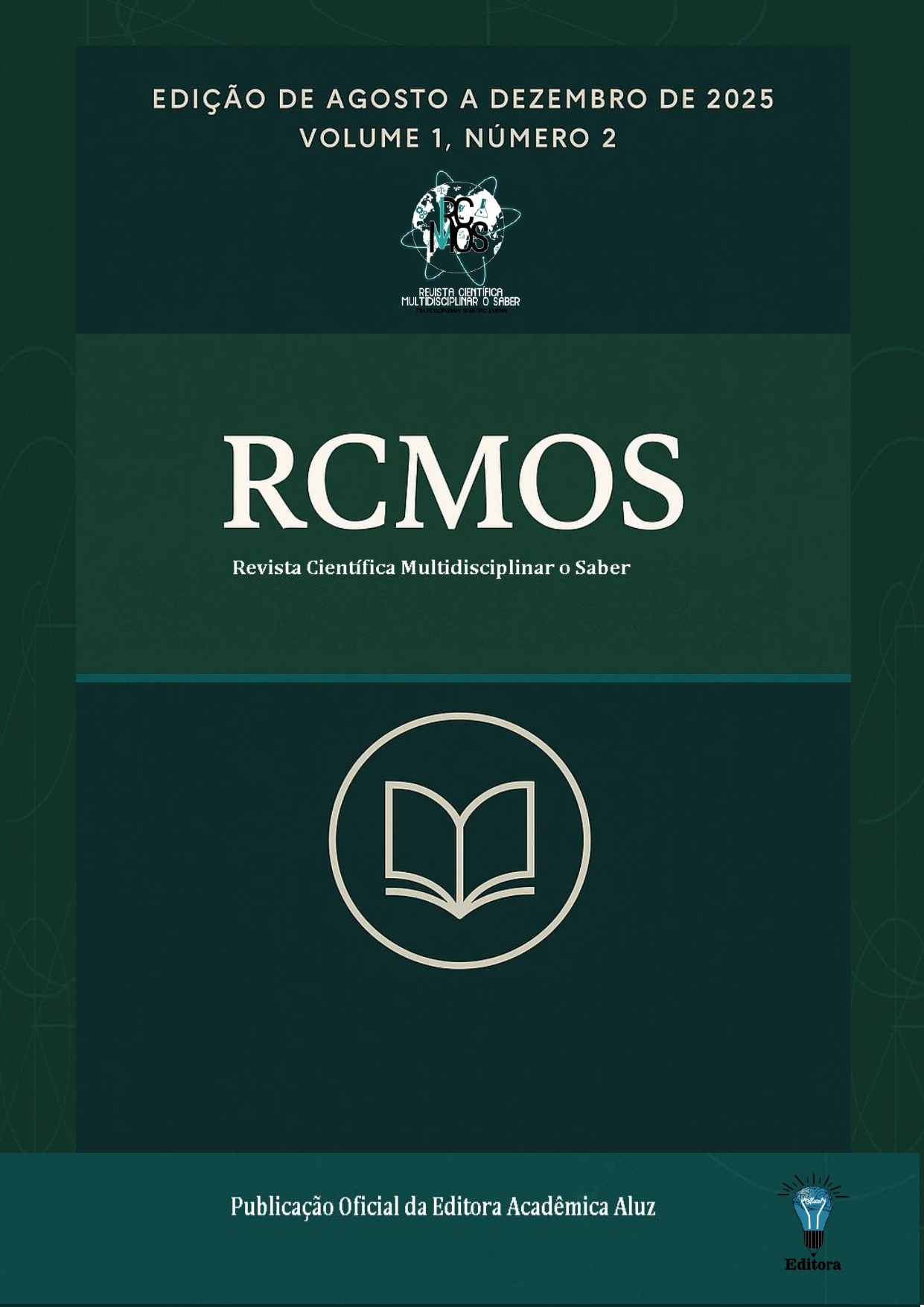Approach to the Patient with Hepatomegaly and Splenomegaly: A Review Study
Approach to the Patient with Hepatomegaly and Splenomegaly: A Review Study
DOI:
https://doi.org/10.51473/rcmos.v1i2.2025.1301Keywords:
Hepatomegaly; Splenomegaly; Diagnosis; Liver.Abstract
Hepatomegaly and splenomegaly are relevant clinical findings often associated with multiple systemic and hepatic conditions. This review study addresses the anatomy and functions of the liver, the main diagnostic methods—both physical and complementary—as well as the various causes related to liver and spleen enlargement. It discusses anatomical and physiological parameters, anatomical variations, pathological mechanisms, and investigation strategies, including laboratory tests, imaging techniques, and, when indicated, liver biopsy. An appropriate clinical approach to patients with hepatomegaly and splenomegaly requires a thorough evaluation, correlating clinical findings and complementary tests to identify the underlying etiology and define the best management strategy.
Downloads
References
Crawford, J. M., Anatomy and histopathology of the liver, in: Satapathy, S. K., Singh, S. P., et al (editors), Hepatology AanEvidence-Based Clinical Compendium, 1st Edition - November 5, 2024, Elsevier, págs. 1-25 DOI: https://doi.org/10.1016/B978-0-443-26710-9.00001-8
Lima, J. M. C., Santos, A A, et. al, Gastroenterologia e Hepatologia, Sintoma Sinais Diagnóstico e Tratamento, 2ª ed, Edições UFC, Fortaleza, 2019, págs. 173-184
Martin P, Approach to the patient with Liver Disease, In: Goldman L; Schafer AI (eds.). Goldman-Cecil Medicina - 2vol. 26ª ed. Philadelphia: Elsevier, 2020. Págs 942-949
Mebius RE, Kraal G. Structure and function of the spleen. Nat Rev Immunol. 2005 Aug;5(8):606-16. doi: 10.1038/nri1669. PMID: 16056254. DOI: https://doi.org/10.1038/nri1669
Freitas, D. Gastrenterologia: Semiologia Clínica e Laboratorial. AstraZeneca, Coimbra, 2005
Winter J N, Approach to the patient with Lymphadenophaty and Splenomegaly, In: Goldman L; Schafer AI (eds.). Goldman-Cecil Medicina - 2vol. 26ª ed. Philadelphia: Elsevier, 2020. Págs 1103 – 1107
Longo, D L. "Linfadenopatia e esplenomegalia." Medicina Interna de Harrison™, 20e Eds. J. Larry Jameson, et al. McGraw-Hill Education, 2018, cap. 62
Shiraiwa, R K, Hepatomegalia e Esplenomegalia, In: Martins, M A (ed), Manual do Residente de Clínica Médica, 2ª ed. BARUERI. Manole, 2017, págs 47-49
Aster, J. and Kumar, V. (2000) ‘Leucócitos, Linfonodos, Baço e Timo.’ In Patologia Estrutural e Funcional. Rio de Janeiro: Guanabara-Koogan, pp. 580–625.
Warshauer DM, Hall HL. Lesões esplênicas solitárias. Semin Ultrasound CT MR 2006; 27:370. DOI: https://doi.org/10.1053/j.sult.2006.06.003
Levy L, Nasereddin A, Rav-Acha M, Kedmi M, Rund D, Gatt ME. Prolonged fever, hepatosplenomegaly, and pancytopenia in a 46-year-old woman. PLoS Med. 2009 Apr 14;6(4): e1000053. doi: 10.1371/journal.pmed.1000053. Epub 2009 Apr 14. PMID: 19365537; PMCID: PMC2661247. DOI: https://doi.org/10.1371/journal.pmed.1000053
Zoli M, Magalotti D, Grimaldi M, et al. Exame físico do fígado: ainda vale a pena? Am J Gastroenterol 1995; 90:1428.
Joshi R, Singh A, Jajoo N, et al. Precisão e confiabilidade da palpação e percussão para detecção de hepatomegalia: um estudo baseado em hospital rural. Indian J Gastroenterol 2004; 23:171.
Reuben A. Exame do abdômen. Clin Liver Dis (Hoboken) 2016; 7:143. DOI: https://doi.org/10.1002/cld.556
https://stanfordmedicine25.stanford.edu/the25/liver.html (Acessado em 19 de janeiro de 2025).
Sham R, Sain A, Silver L. Lobo de Riedel hipertrófico do fígado. Clin Nucl Med 1978; 3:79. DOI: https://doi.org/10.1097/00003072-197803000-00001
Lobo do fígado de Kudo M. Riedel e sua implicação clínica. Intern Med 2000; 39:87. DOI: https://doi.org/10.2169/internalmedicine.39.87
Loloi J, Patel A, McDevitt P, et al. Quão fortemente as estimativas de exame físico e as medições ultrassonográficas do tamanho do fígado se correlacionam? Um estudo prospectivo. Am J Med 2019; 132:103. DOI: https://doi.org/10.1016/j.amjmed.2018.09.012
de Porto AP, Lammers AJ, Bennink RJ, et al. Avaliação da função esplênica. Eur J Clin Microbiol Infect Dis 2010; 29:1465. DOI: https://doi.org/10.1007/s10096-010-1049-1
Wilkins BS. O baço. Br J Haematol 2002; 117:265. DOI: https://doi.org/10.1046/j.1365-2141.2002.03425.x
Di Sabatino A, Carsetti R, Corazza GR. Pós-esplenectomia e estados hipoesplênicos. Lancet 2011; 378:86. DOI: https://doi.org/10.1016/S0140-6736(10)61493-6
Schranz T, Klaus J, Kratzer W, et al. Uma comparação do tamanho do baço medido por ultrassom em uma amostra populacional aleatória e uma amostra pareada de pacientes em um hospital universitário, e a determinação de valores normais e fatores de influência. Z Gastroenterol 2021; 59:438. DOI: https://doi.org/10.1055/a-1404-4097
Barkun AN, Camus M, Meagher T, et al. Aumento esplênico e espaço de Traube: quão útil é a percussão? Am J Med 1989; 87:562. DOI: https://doi.org/10.1016/0002-9343(89)90699-2
Downloads
Additional Files
Published
Issue
Section
Categories
License
Copyright (c) 2025 Vera Ambrozina Delgado de Brito de Pina, Lucas Neves Solon Petrola, Nathan Portela de Oliveira, Lucas Carvalho Vasconcelos, Beatriz Castelo Branco Rocha (Autor)

This work is licensed under a Creative Commons Attribution 4.0 International License.












